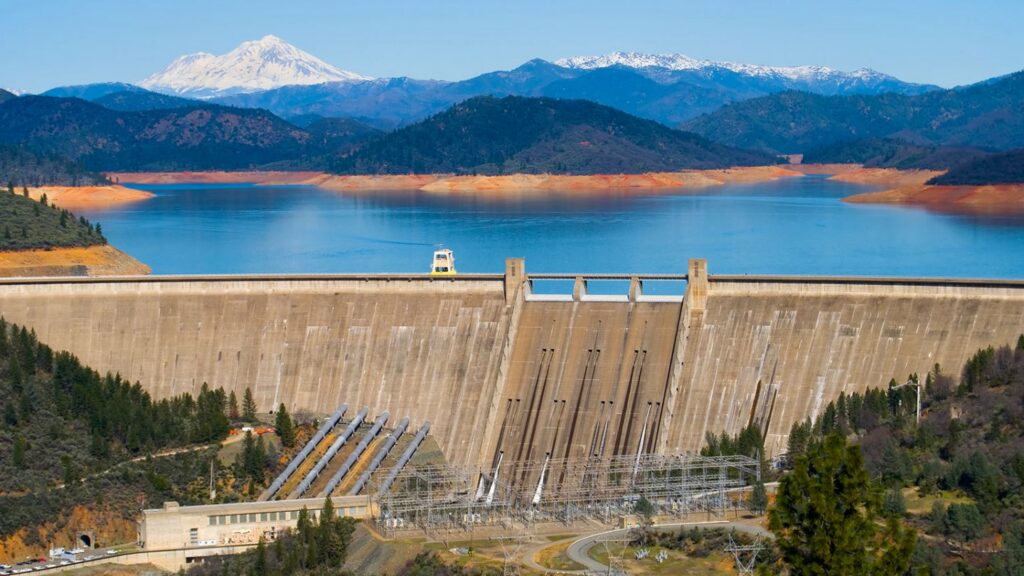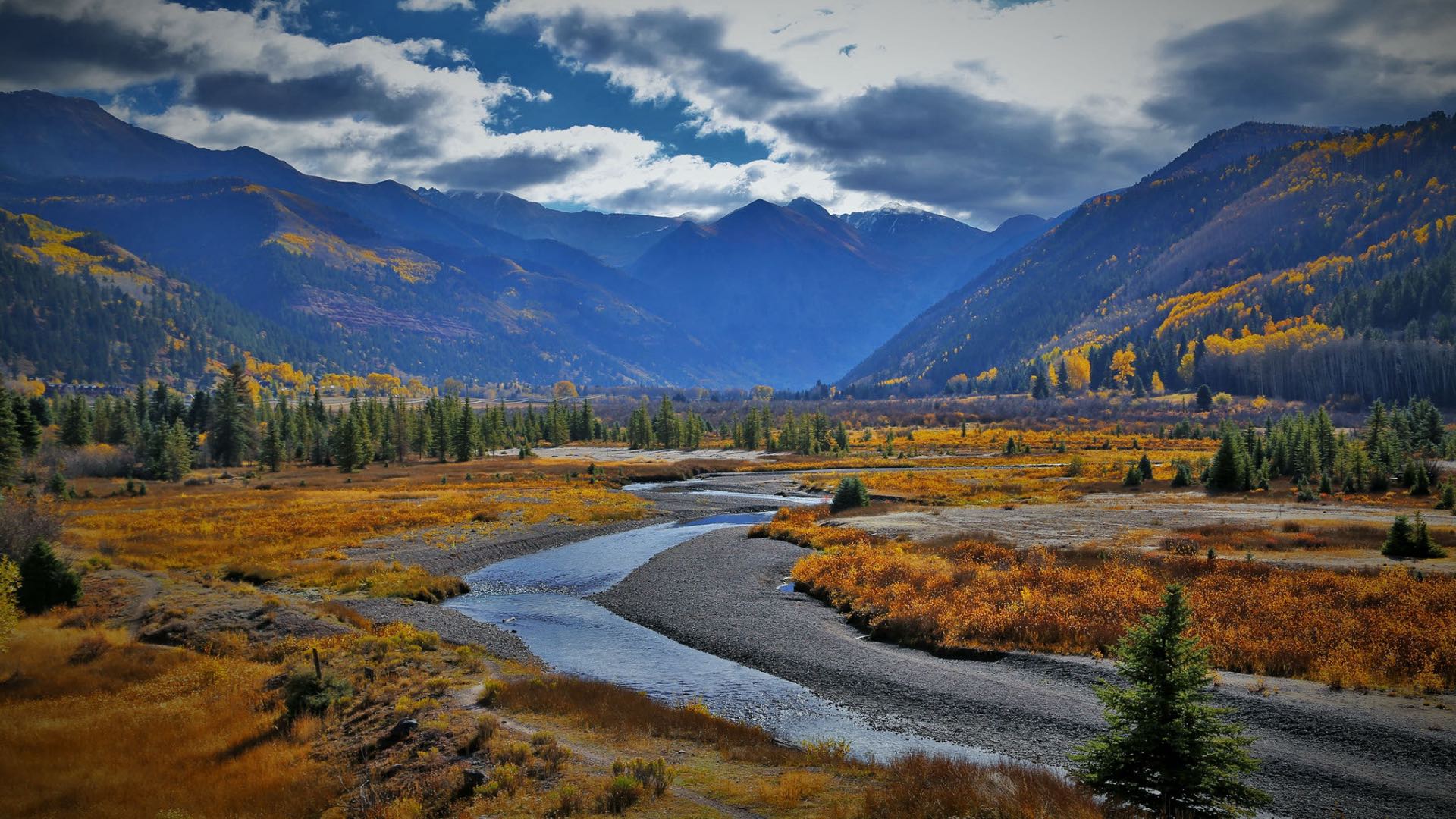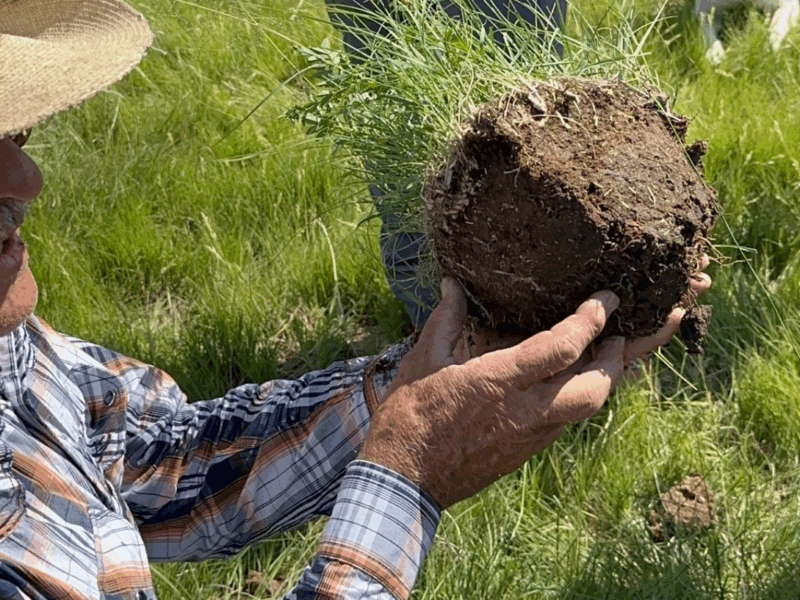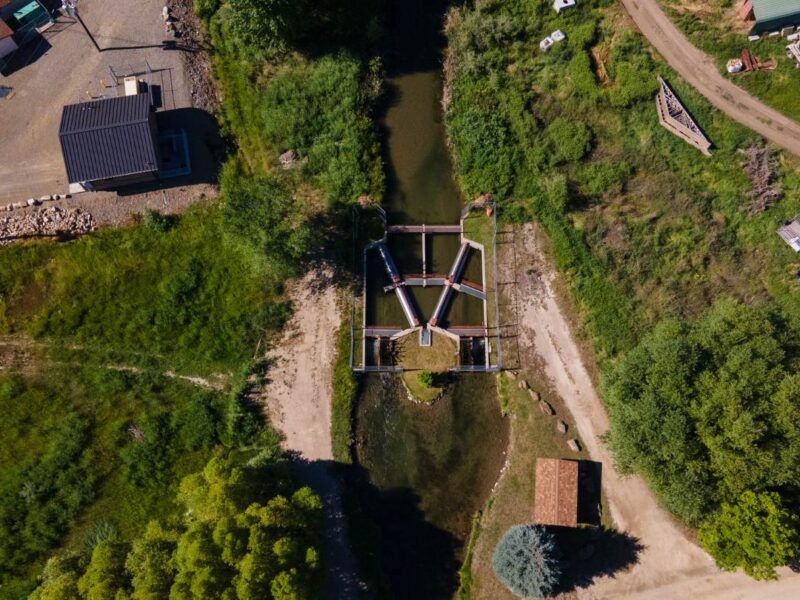Despite the above average snow totals and atmospheric rivers that this winter has brought, the West remains in the grips of a multi-year drought. Landowners are grateful for above average snow totals and other precipitation that this winter has brought to the many parched places in the West. Yet many landowners and communities are concerned or have already suffered losses and other challenges from this big water year. The uncertainty we are facing with cycles of long-term drought and severe storm events means that a focus on watershed health, along with necessary water infrastructure, are smart investments. There are a growing number of state and federal funding programs that can help landowners make these critical investments. Here is a rundown of the opportunities available with application deadlines this spring.
National Fish and Wildlife Foundation America the Beautiful Challenge Grants
The Biden-Harris administration and National Fish and Wildlife Foundation (NFWF) today announced the release of the 2023 Request for Proposals (RFP) for the America the Beautiful Challenge. The program, which was launched in 2022, is dedicated to funding locally led landscape-scale conservation and restoration projects that implement existing conservation plans across the nation.
In 2023, approximately $116 million will be awarded in nationwide funding.. The ATBC seeks to fund projects across the following themes:
- Conserving and restoring rivers, coasts, wetlands and watersheds
- Conserving and restoring forests, grasslands and important ecosystems that serve as carbon sinks
- Connecting and reconnecting wildlife corridors, large landscapes, watersheds, and seascapes
- Improving ecosystem and community resilience to flooding, drought, and other climate-related threats
- Expanding access to the outdoors, particularly in underserved communities
Collectively, these themes invite applicants to develop landscape-level ATBC proposals that address conservation and public access needs with: cumulative benefits to fish and wildlife, enhanced carbon sequestration and storage, benefits to and engagement with underserved communities, and protection of ecosystems through resilience-focused and nature-based solutions.
There are 5 grant categories. The fifth category is for work with private landowners:
Private Forests, Rangeland and Farmland Grants: Grants will support outreach and engagement with private landowners for voluntary conservation efforts on working lands to advance NRCS Working Lands for Wildlife Framework and Initiatives (e.g. sagebrush, grasslands, bobwhite quail, etc.).
- Eligible applicants: Non-profits, local municipal governments, and educational institutions, States, U.S. territories, and Tribes
- Size: $200,000 to $500,000
- Length: 2 to 3 years
- Grants under this category are contingent upon awards by NRCS
For more information, check out the website here along with a March 9th webinar recording.
Pre-Proposal Due Date: Thursday, April 20, 2023, by 11:59 PM Eastern Time
Full Proposal Due Date (by invitation only): Thursday, July 20, 2023, by 11:59 PM Eastern Time
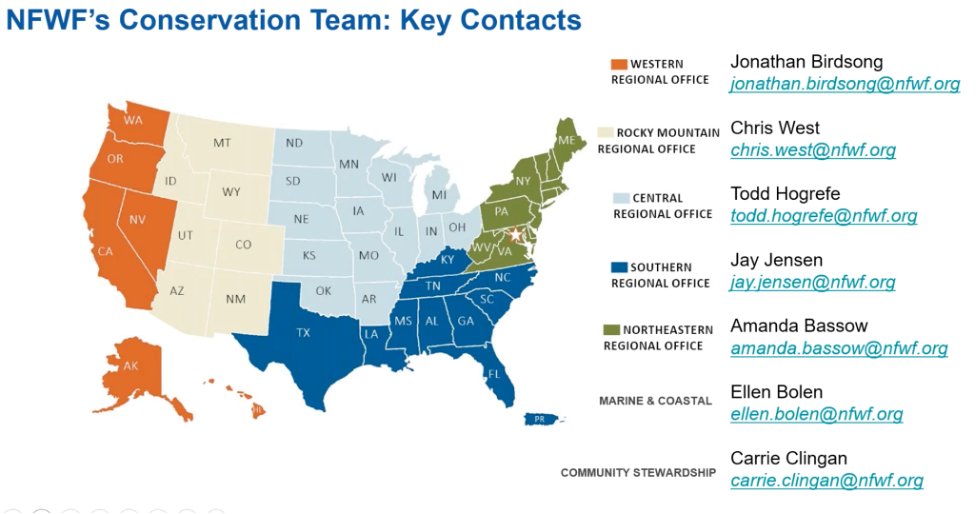
Bureau of Reclamation’s WaterSMART program
Reclamation received a total of $2.1 billion in funding under Section 40901 of the Bipartisan Infrastructure Law for programs within WaterSMART and Aquatic Ecosystem Restoration, and a new authority for Multi-Benefit Projects to Improve Watershed Health. There are a number of existing and upcoming opportunities for landowners and partner organizations through the Bureau of Reclamation’s WaterSmart Grants. Check out the full calendar of opportunities here.
Find an overall BOR WaterSMART Calendar for 2023 here.
Aquatic Ecosystem Restoration Projects (WaterSMART)
The new WaterSMART Aquatic Ecosystem Restoration Program will provide cost shared funding to states, Tribes, and other entities as they study, design and construct aquatic ecosystem restoration projects that are collaboratively developed, have widespread regional benefits, and result in the improvement of the health of fisheries, wildlife, and aquatic habitat.
Eligible restoration activities include, but are not limited to:
- Removal or Modification of Barriers to Fish Passage
- Restoration of Connectivity
- Restoration of Aquatic Habitat
- Improvement of Water Availability, Quality, and Temperature.
- Other Related Activities
This opportunity has not been posted yet, but should be up soon.
More information here. Webinar can be found here.
Farmer/Rancher Grant Program from Western Sustainable Agriculture Research and Education (SARE)
The Western SARE Farmer/Rancher Research & Education Grant Program focuses on advancing on-farm sustainability solutions by funding innovative producer-driven research and outreach. This grant program involves agricultural producers (main applicants) and technical advisor(s) implementing projects to address identified needs in sustainable agriculture.
“We recognize that producers are always innovating and improving on-farm/ranch practices. This program aims to honor producer innovation by funding on-farm research that benefits and is led by producers themselves.”
Projects with 1-2 producers may apply for up to $25,000 and projects with 3 or more producers working together may apply for up to $29,900.
Proposals are due October 25, 2023. Click here for more information
Colorado
Colorado Watershed Restoration Program
The Colorado Water Conservation Board (CWCB) has approved a special release of the Colorado Watershed Restoration Program. The Program will focus on the development of Wildfire Ready Watershed (wildfirereadywatersheds.com) action plans and implementation of projects designed to mitigate post wildfire impacts.
House Bill 22-1379 was signed into law in May 2022. Utilizing funds from the American Rescue Plan Act (ARPA) State and Local Fiscal Recovery Fund (SLFRF), it established an appropriation of $10,000,000 for the CWCB Colorado Watershed Restoration Program. The bill states that the funds shall be used “for watershed restoration and flood mitigation grants to restore, mitigate, and protect stream channels and riparian areas susceptible to flood hazards and sediment erosion and deposition after wildfire, including expenditures for the design and implementation of projects intended to mitigate increased flows, sediment, and debris, with federal and local matching requirements.” Funds appropriated in HB 22-1379 must be contracted by December 30, 2024 and spent before December 30, 2026.
Find out more about this unique new funding opportunity here.
Colorado Department of Agriculture STAR healthy soil program
The Colorado Department of Agriculture (CDA) is now accepting applications from Colorado’s conservation districts and other eligible entities, such as non-profits, interested in administering STAR Plus grant funding to agricultural producers who expand or introduce soil health practices in their operations. Improving soil health can improve available soil moisture, reduce agricultural runoff, decrease erosion, and support more productive, nutritious crops.
If selected, the organization will be awarded $20,000, and then $2,000 for each farmer or rancher they enroll in the STAR Plus program (up to 10 producers total). The $2,000 will be an annual payment for the four years of the program. The producer will also receive annual incentive payments, technical support, and other soil health resources. Read the full press release here. Applications due April 3, 2023.
For more information and to watch the March 9th webinar, visit the CDA Star website.
Colorado Greater Sage-Grouse Fund
The National Fish and Wildlife Foundation requests Pre-Proposals under the Colorado Greater Sage-Grouse Fund (“Fund”) for projects that will restore, improve, preserve, and/or conserve greater sage-grouse habitat in Colorado and Utah. NFWF established and administers the Fund with monies it received as compensatory mitigation for authorized impacts of the Gateway South Transmission Project to greater sage-grouse in Colorado, as approved by the Bureau of Land Management (“BLM”) and its Record of Decision for the project.
The preferred geographic focus for project activities is the Northwest Colorado Biological Significant Unit (“BSU”) located in Moffat and Rio Blanco counties. Projects in other BSUs in Colorado will be considered if projects in the preferred geographic focus area are not available.
NFWF expects to award up to approximately $16.79 million from the Fund to projects through this RFP. Up to approximately $13.43 million of this amount may be made available for conservation easement / fee title acquisitions; up to approximately $1.67 million of this amount may be made available for sagebrush restoration; and up to approximately $1.67 million of this amount may be made available for juniper / conifer removal.
NFWF, as the administrator of the Fund, will accept Pre-Proposals for projects through Friday, April 14, 2023 at 9:59pm Mountain time.
New Mexico
New Mexico Department of Agriculture (NMDA) Healthy Soil Program
NMDA created its Healthy Soil Program after the Healthy Soil Act was signed into law in 2019. The purpose of the program is “to promote and support farming and ranching systems and other forms of land management that increase soil organic matter, aggregate stability, microbiology and water retention to improve the health, yield and profitability of the soils of the state.”
Every year, NMDA awards grants to implement on-the-ground projects that implement one or more of the five soil health principles:
- keeping soil covered
- minimizing soil disturbance on cropland and minimizing external inputs
- maximizing biodiversity
- maintaining a living root
- integrating animals into land management, including grazing animals, birds, beneficial insects or keystone species, such as earthworms
This cycle of grants will fund on-the-ground projects that occur between August 1, 2023 and May 31, 2024.
NMDA welcomes applications for Healthy Soil Program grants from 2 types of applicants:
Eligible Entities, defined in the Healthy Soil Act as “local governmental [entities] with proven land management capacity to support healthy soil”, including:
Pueblos, tribes, and nations; Acequias; Land grants; Soil and water conservation districts (SWCDs); NMSU’s Cooperative Extension Service; Other local governmental entities with “proven land management to support healthy soil”
The grant application period for Eligible Entities will open April 11, 2023 and close May 17, 2023. Register for the Eligible Entities webinar (April 18) to see the steps for completing the online application.
Individual Applicants, a category that includes individuals, businesses, and nonprofits directly engaged in farming, ranching, and/or other forms of land management. The grant application period for Individual Applicants will open February 17, 2023 and close April 21, 2023. Learn about the application requirements unique to Individual Applicants.
For more information, visit the NMDA website here.
Southwest
Riverscape Restoration in the Western United States and Northern Mexico
The Biophilia Foundation announced the availability of implementation and policy grants for process-based riverscape restoration in the arid southwestern US and northern Mexico. Details are available on the Biophilia website.
The Biophilia Foundation seeks proposals for projects to improve the resilience of watersheds in arid and semi-arid regions of the southwestern United States and northern Mexico. Two types of grants are available:
Implementation: Grants of $50,000 to $100,000 are available for projects that implement low-tech, process-based, and/or beaver-based restoration of upland streams and rivers.
Policy: Grants up to $25,000 are available for efforts to reduce regulatory and policy barriers that hinder process-based restoration.
The Biophilia Foundation also welcomes inquiries regarding capacity building for riverscape restoration, research (primarily carbon sequestration, climate change adaptation, and other riparian ecosystem services), innovative finance, and improving the availability of information available to landowners and land managers.
Proposals will be reviewed bimonthly beginning mid-April 2023.
Federal agency ongoing land stewardship funding opportunities
USDA Conservation Reserve Program (CRP)
CRP is a land conservation program administered by the Farm Service Agency (FSA). In exchange for a yearly rental payment, farmers enrolled in the program agree to remove environmentally sensitive land from agricultural production and plant species that will improve environmental health and quality. Contracts for land enrolled in CRP are from 10 to 15 years in length. The long-term goal of the program is to re-establish valuable land cover to help improve water quality, prevent soil erosion, and reduce loss of wildlife habitat.
CRP enrollment options include General CRP, Grassland CRP and Continuous CRP (which includes CLEAR30, State Acres For Wildlife Enhancement (SAFE), Conservation Reserve Enhancement Program, and Farmable Wetlands Program)
Signup for General CRP runs from February 27 to April 7. Read more in the February 16 news release.
The Continuous CRP Signup is ongoing.
Dates for other CRP signups, such as General, Grassland, and CLEAR30 are forthcoming.
Producers interested in enrolling in CRP should contact the FSA office at their local USDA Service Center.
For more information, visit the CRP website here.
USFWS Partners for Fish and Wildlife
The Partners for Fish and Wildlife Program provides free technical and financial assistance to landowners, managers, tribes, corporations, schools and nonprofits interested in improving wildlife habitat on their land. Since 1987, the Partners program has helped more than 60,000 landowners restore more than 7 million acres of forest, prairie, wetland and stream habitat for wildlife.
A phone call or email is all it takes to get started. Contact your state coordinator to schedule an initial site visit and learn how Partners for Fish and Wildlife can help you.
For more information, visit the Partners website here.
NRCS – National Water Quality Initiative
As USDA’s premiere water quality initiative, National Water Quality Initiative (NWQI) provides a way to accelerate voluntary, on-farm conservation investments and focused water quality monitoring and assessment resources where they can deliver the greatest benefits for clean water.
Now in its eleventh year, the National Water Quality Initiative is a partnership among NRCS, state water quality agencies and the U.S. Environmental Protection Agency to identify and address impaired water bodies through voluntary conservation. NRCS provides targeted funding for financial and technical assistance in small watersheds most in need and where farmers can use conservation practices to make a difference.
Conservation systems include practices that promote soil health, reduce erosion and lessen nutrient runoff, such as filter strips, cover crops, reduced tillage and manure management. These practices not only benefit natural resources but enhance agricultural productivity and profitability by improving soil health and optimizing the use of agricultural inputs.
State water quality agencies and other partners contribute additional resources for watershed planning, implementation and outreach. They also provide resources for monitoring efforts that help track water quality improvements over time.
Contact: John Bullough, Conservation Initiatives Coordinator: Water Quality
For more information, visit the NWQI website here.
Get important updates like this in your inbox as they happen.
Error: Contact form not found.
